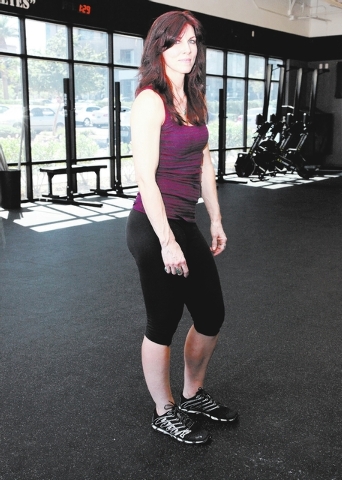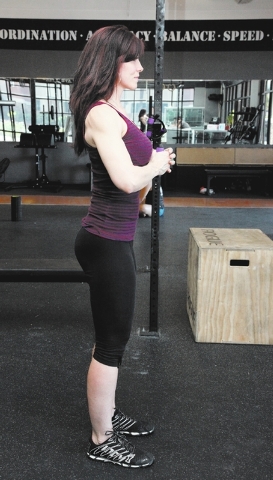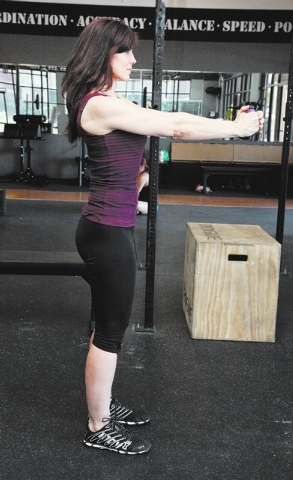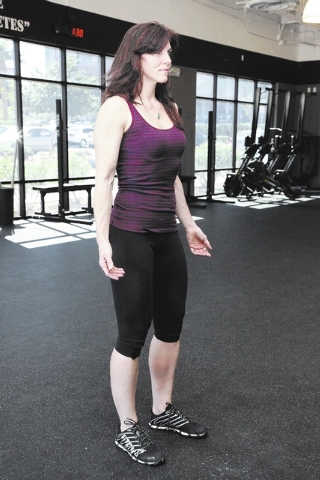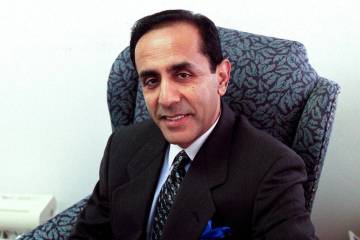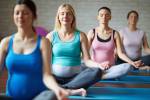Stand up straight for better workouts
We adopt a few different postures throughout the day. In a perfect world, those postures would be conducive and transferable to the functional movements the day requires. Sadly, the path of least resistance often wins and posture is the first thing to suffer.
You don’t need gym time to work on your posture. There is no need to schedule it in the calendar or waste space on your action-items list. All you have to do is remember today’s drill and you can work your core anywhere — in the car, waiting in a line, talking to your boss or riding in the elevator.
Standing seems like a silly thing to teach but there are many transferable skills found in adopting a good posture. Knowing what it feels like to contract the core, glutes and back transfers directly to the gym and effective lifting. Another benefit is to know what it feels like when those muscles get tired. If you notice your core starting to fatigue during exercise, it is a good idea to rest. Working with an unengaged core means your spine is flopping around instead of being held still.
Let’s break down the elements of standing. This way you can see just how they benefit posture and transfer to lifting. Glute activation is crucial. Glutes are among the body’s largest muscles, so why not use them? Contracting the glutes will put the hip capsule in a safe, externally rotated position. This goes down the line and correctly positions the knee and ankle.
Draw the belly button inward toward the spine to activate the core. Another way to think of it is to reduce the distance between the rib cage and the top of the pelvis. A tight core means the spine is braced and in a stable position. You can see a straight spine by being able to notice a natural lumbar curve.
Keeping a straight upper back may be harder than you think. Many of today’s activities allow for the body to adopt a passive and floppy posture. One of the first things to suffer is the upper back posture. Sitting and standing with a rounded upper back can let the lats become shortened and the thoracic spine become tight. This makes it more difficult to stand up straight even when you want to.
Standing straight with the shoulders back can help undo some of that bad patterning. Maintaining that form can prove to be difficult at first because those muscles fatigue fast, and after a while you just forget to keep them activated. The more you practice the better you will become at maintaining their activation.
Don’t forget the proper head position. Try to pull the chin inward toward the back of the neck. This aligns the spine. If you are prone to have a forward head this may feel similar to a stretch.
At first you may feel weird as you adopt a new posture. With time it will become easier to maintain an active core and straight back. Try to maintain correct posture in small increments at first, a few seconds at a time and then a few minutes. Before long you will be known for your perfect posture. You will also reap the benefits during your workouts.
The paloff press takes standing and core stability to the next level. It starts where standing leaves off. The exercise in the paloff press is in the stabilization portion. The arms perform a simple press while the core stabilizes the body through the movement.
This exercise can be adapted to a variety of athletes. Big lifters can use this to help build upper extremity stability and core strength. Those new to exercise can use this to teach core activation. It is also effective for those who find it difficult to perform other basic exercises such as crunches and planks. You can remain standing and there is little setup and strength required, only stabilization.
Chris Huth is a Las Vegas trainer. He can be reached at 702trainer@gmail.com. If you are a Las Vegas trainer and want to share your love of fitness as a guest coach, please contact him. Consult your physician before beginning any exercise program.



